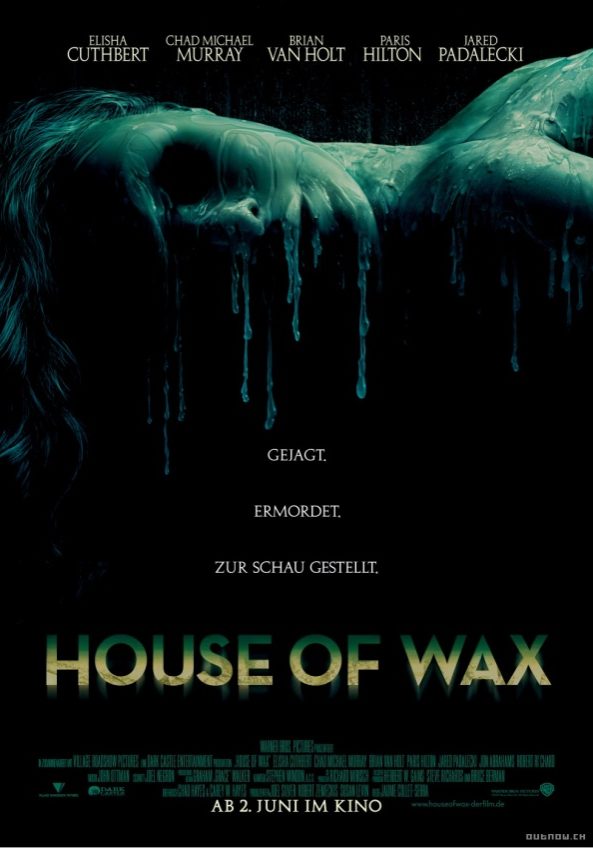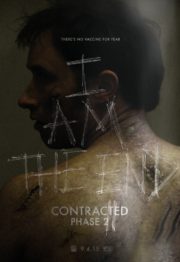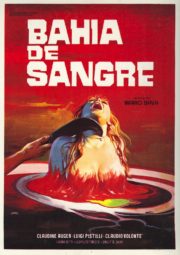The Macabre Meltdown of House of Wax
“There’s a reason it’s called House of Wax,” one character ominously remarks. From this line alone, the 2005 horror feature House of Wax, directed by Jaume Collet-Serra, beckons viewers into its eerie, pliable world. Released during a resurgence of slasher flicks, the film offers a unique blend of visceral terror and teen scream tropes. The story follows a group of college friends who find themselves stranded in a desolate ghost town, only to discover that its main attraction, a wax museum, holds hair-raising secrets ensuring they may never leave.
Conjuring Nightmares: Atmosphere and Tone
The film’s petrifying prowess lies in its ability to intertwine the quiet dread of isolation with the sudden jolts of terror. Collet-Serra weaves a web of suspense by using the desolate setting to full effect, crafting a sense of foreboding doom that cloaks every frame before the first drop of wax even spills. The director’s methodical pacing, interspersed with moments of frantic chaos, keeps viewers on the edge, never fully at ease within the film’s haunting atmosphere.
Cinematic Chills: Cinematography and Visuals
Delving deeper into House of Wax, one cannot overlook the contribution of cinematography and visual effects to the film’s horrific allure. The cinematography employs a mix of dimly lit shots and unsteady camera movements. They create an unnerving unease, an ambience where something dreadful seems to lurk in each shadow.
Collet-Serra’s team excels in the usage of an unsettling color palette with muted tones and occasional stark contrasts, which amplify the film’s sinister themes. Special effects are judiciously used, with the wax figures standing out as masterstrokes of horror, unnervingly lifelike in their frozen screams.
Dreadful Echoes: Sound and Silence
The soundtrack and sound design are pivotal in compounding the film’s harrowing nature. Subtle creaks and the muffled screams behind walls contribute to a chilling soundscape. Striking a balance between what’s heard and what’s ominously silent, the film often escalates fear with the absence of sound, propelling anticipatory dread to palpable heights.
In the Flesh: Characters and Performances
Amidst the scream-inducing set pieces, performances must not be overlooked. The cast, led by Elisha Cuthbert and Chad Michael Murray, deliver a mix of potent fear and youthful defiance. However, the characters at times suffer from genre-typical underdevelopment, detracting from their plausibility in a world mired by terror.
Still, these young actors effectively embody the quintessential horror movie archetypes, contributing the required desperation and disbelief that is expected in such a macabre tale.
The Spectrum of Scares: Horror Type and Techniques
House of Wax combines elements of body horror with psychological torment resulting in a gruesome cocktail of scares. The film adheres to many slasher formulae with its predictability in character fates, yet where it excels is in the visceral body horror, unsettlingly realized through the wax transformations that are grotesque and deeply disturbing.
The scares are a mix of the visceral and the sudden, a blend of drawn-out dread and quick, gut-wrenching revelatory moments. Yet, while the effectiveness of these scares may occasionally fall into the predictable, the brutality of certain scenes does resonate and can be quite impactful.
Reflections in Wax: Themes and Resonance
Despite its surface-level shocks, House of Wax functions allegorically, reflecting themes of identity and the haunting allure of perfection. Underneath its melting facade, it questions the depth of our societal masks, which, in a way, adds a more complex layer to the film’s straightforward terror.
Horror’s Mold: The Verdict
As a whole, House of Wax stands as a middle-of-the-road horror outing that can satisfy those in search of graphic chills, though it may not linger in the minds of more discerning horror aficionados seeking novelty or profound messaging.
Casual viewers and die-hard fans of the slasher subgenre will likely appreciate the film’s dedication to gruesome set-pieces and classic genre thrills, but viewers with a weak stomach or an inclination towards more psychologically driven horror may want to proceed with caution due to the film’s graphic content.
Comparable Fear: Genre Cross-References
When placed against the backdrop of horror cinema, House of Wax can be viewed as less revolutionary and more referential. It brings to mind the likes of The Texas Chainsaw Massacre for its grisly family dynamics and Friday the 13th for its remote, youngster-stalking terror. However, it lacks the innovative punch that cements such titles as genre icons.
In Closing: Is House of Wax Worth the Melt?
Ultimately, House of Wax is a horror expedition into the visually unsettling and depraved, playing with fire in its waxen halls of horror. Its strengths lie in effects, shocks, and atmospheric setups, while its weaknesses emerge with character depth and predictability. As such, it’s a film best recommended for those looking to indulge in some late-night terror without expecting groundbreaking frights.
A final warning to potential viewers: expect graphic violence and disturbing imagery, making it suitable for a mature audience prepared for an intense, gore-filled experience.




